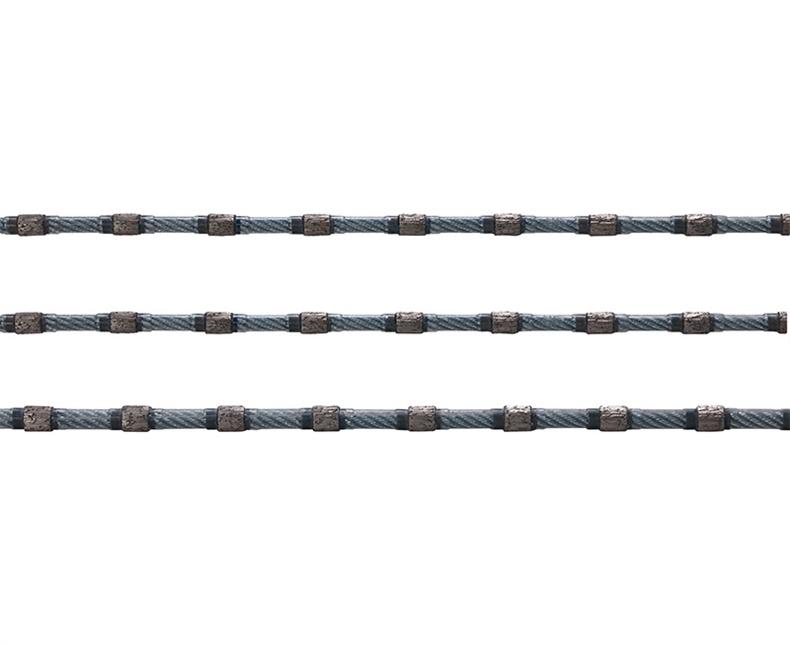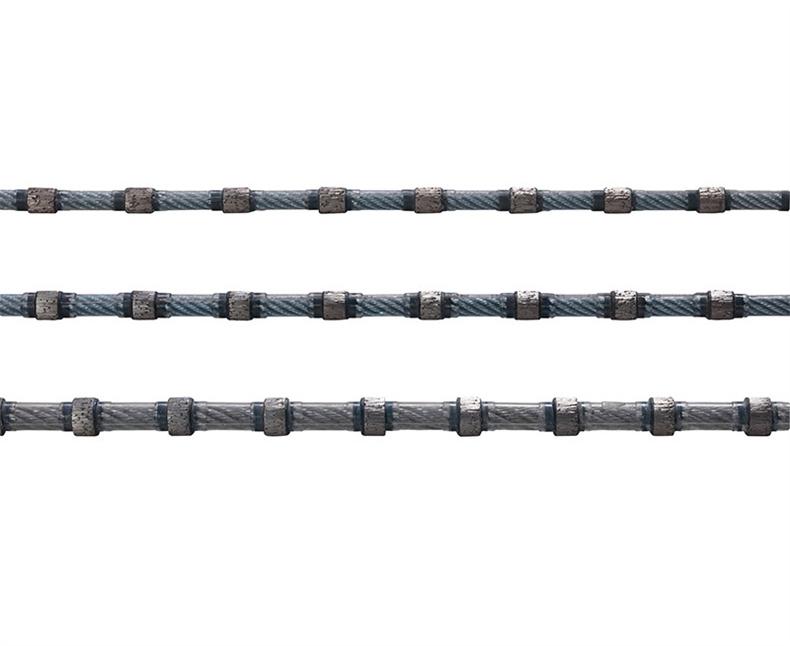Author:Huada Quarrying Machine FROM:Stone quarry machine manufacturer TIME:2024-11-23
The performance of diamond wire saws has revolutionized the cutting industry, particularly in applications like mining, stone processing, and construction. A critical factor influencing the efficiency and effectiveness of diamond wire saws is the diameter of the diamond wire. This article explores how varying diameters impact cutting performance, including aspects like cutting speed, precision, and material compatibility.

Diamond wire saws consist of a thin steel wire embedded with diamond segments. The use of diamonds, known for their exceptional hardness, enables the wire to cut through hard materials with ease. Various factors affect the cutting performance of diamond wire saws, including the type of material being cut, the grit size of the diamonds, and notably, the diameter of the wire itself. Each of these components plays a significant role in determining the efficiency and outcome of the cutting process.

One of the most immediate effects of wire diameter on cutting performance is the cutting speed. Thicker diamond wires tend to have a higher rigidity, which can lead to increased stability during operation. This stability allows for faster cutting speeds, particularly in harder materials where greater force is required. Conversely, thinner wires may flex more, potentially reducing cutting speed and efficiency. However, they can also navigate tighter curves and intricate shapes, making them suitable for specialized tasks.
The diameter of the diamond wire also significantly affects precision and surface finish. Thinner wires generally provide a finer finish due to their ability to make more precise cuts. This makes them ideal for applications where aesthetic quality is essential, such as in the production of intricate stone carvings or high-end glass products. In contrast, thicker wires may leave a rougher edge but can cut through larger volumes of material more quickly. Therefore, the choice of wire diameter must balance the need for speed against the requirements for precision.
Different materials respond uniquely to various wire diameters. For instance, when cutting softer materials like marble or limestone, both thick and thin wires may perform adequately. However, when dealing with harder materials like granite or concrete, the appropriate choice of diameter becomes more critical. Thicker wires are often required to withstand the demands of cutting through such tough substances effectively. In contrast, thinner wires may be better suited for detailed work on softer materials. Understanding the properties of the materials being cut is essential for selecting the appropriate wire diameter for optimal results.
The durability of diamond wire is another crucial aspect influenced by its diameter. Thicker wires typically exhibit greater wear resistance due to their increased material volume, allowing them to endure longer cutting sessions without significant degradation. This durability translates into reduced costs over time, as users will need to replace the wire less frequently. On the other hand, thinner wires may experience quicker wear, especially in demanding applications, necessitating more frequent replacement and potentially increasing operational costs.

Effective cooling and lubrication are vital for maintaining optimal cutting performance. The diameter of the diamond wire affects how heat is dissipated during cutting. Thicker wires can carry away heat more effectively due to their larger surface area, which reduces the risk of overheating and prolongs the life of the wire. Thinner wires may require more careful management of cooling fluids to prevent overheating and ensure consistent performance. Proper lubrication helps in minimizing friction, which can enhance the overall cutting efficiency regardless of wire diameter.
Choosing the right wire diameter not only influences technical performance but also has economic implications. Thicker wires may come with a higher initial cost; however, their longevity and efficiency can offset these expenses over time. Thinner wires might be cheaper initially but could result in higher replacement rates. Therefore, organizations must consider their specific cutting needs, material types, and budget constraints when selecting the appropriate wire diameter for their operations.
As technology advances, the design and optimization of diamond wire saws continue to evolve. Innovations in materials and engineering may lead to the development of wires that combine the benefits of both thick and thin diameters. Future trends may focus on enhancing the balance between cutting speed, precision, and durability, catering to the increasingly sophisticated demands of various industries. Additionally, advancements in coatings and synthetic diamond technologies promise to further improve cutting performance regardless of wire diameter.
The diameter of diamond wire plays a pivotal role in determining cutting performance across various applications. From influencing cutting speed and precision to affecting durability and economic viability, understanding the implications of wire diameter is essential for achieving optimal results. As the industry continues to innovate, the ongoing assessment of wire diameter relative to specific cutting tasks will remain crucial for maximizing efficiency and effectiveness in material processing.